The flavorful harmony of pork, dashi stock, and miso in Tonjiru is sure to bring you a delightful surprise. It has a distinct flavor that sets it apart from traditional miso soup.
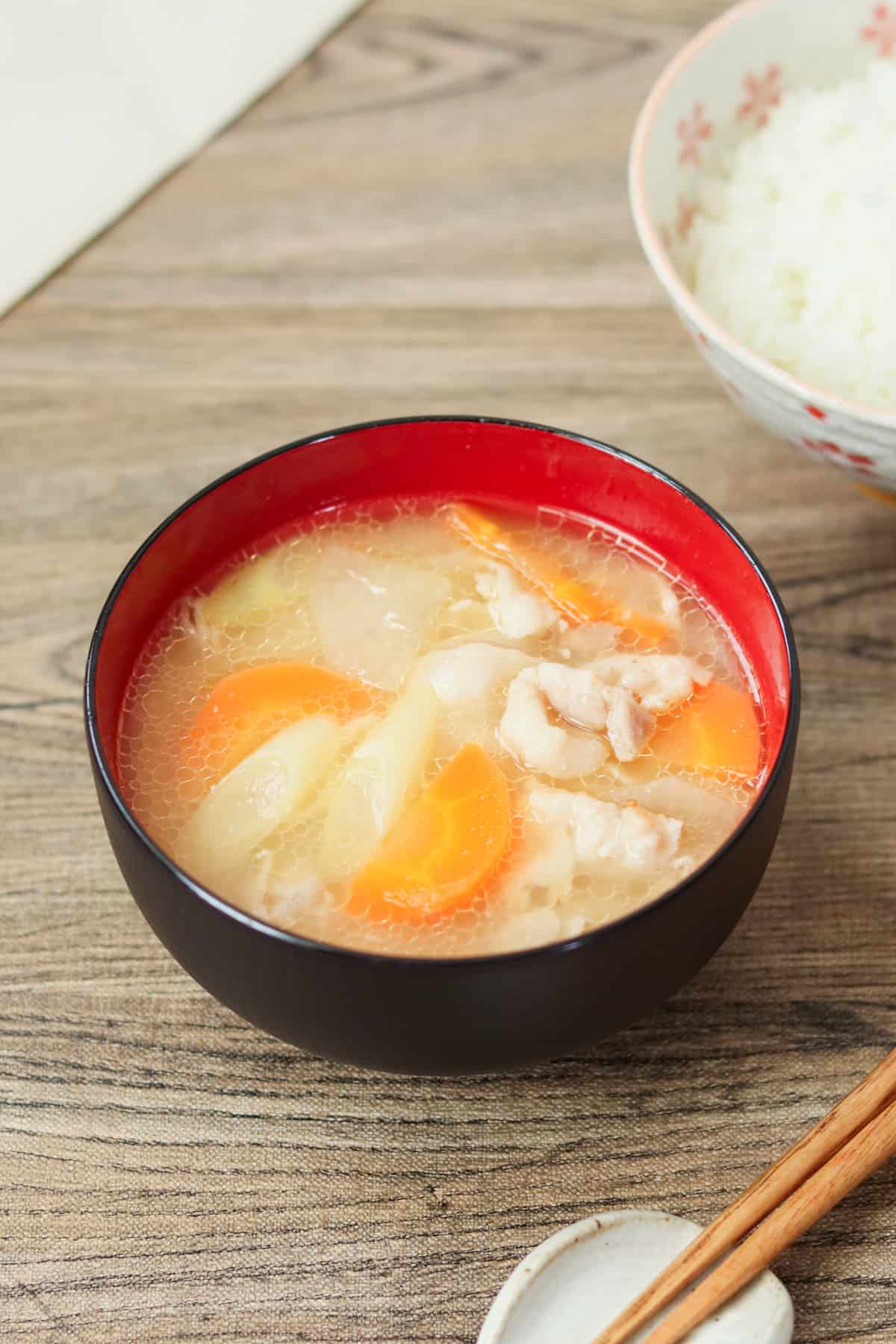
Jump to:
What is Tonjiru?
Tonjiru is a hearty Japanese soup made by sautéing pork and vegetables, adding dashi stock, and dissolving miso. "Ton" means pork, and "jiru" refers to soup. While it is a type of miso soup, the focus is not so much on enjoying the flavor of the miso but rather on the harmony of the ingredients, including miso, dashi, pork, and vegetables.
The major differences compared to traditional miso soup are the use of pork and the step of sautéing the ingredients before boiling. With just these simple additions, the soup gains richness and develops a distinct flavor that sets it apart from regular miso soup.
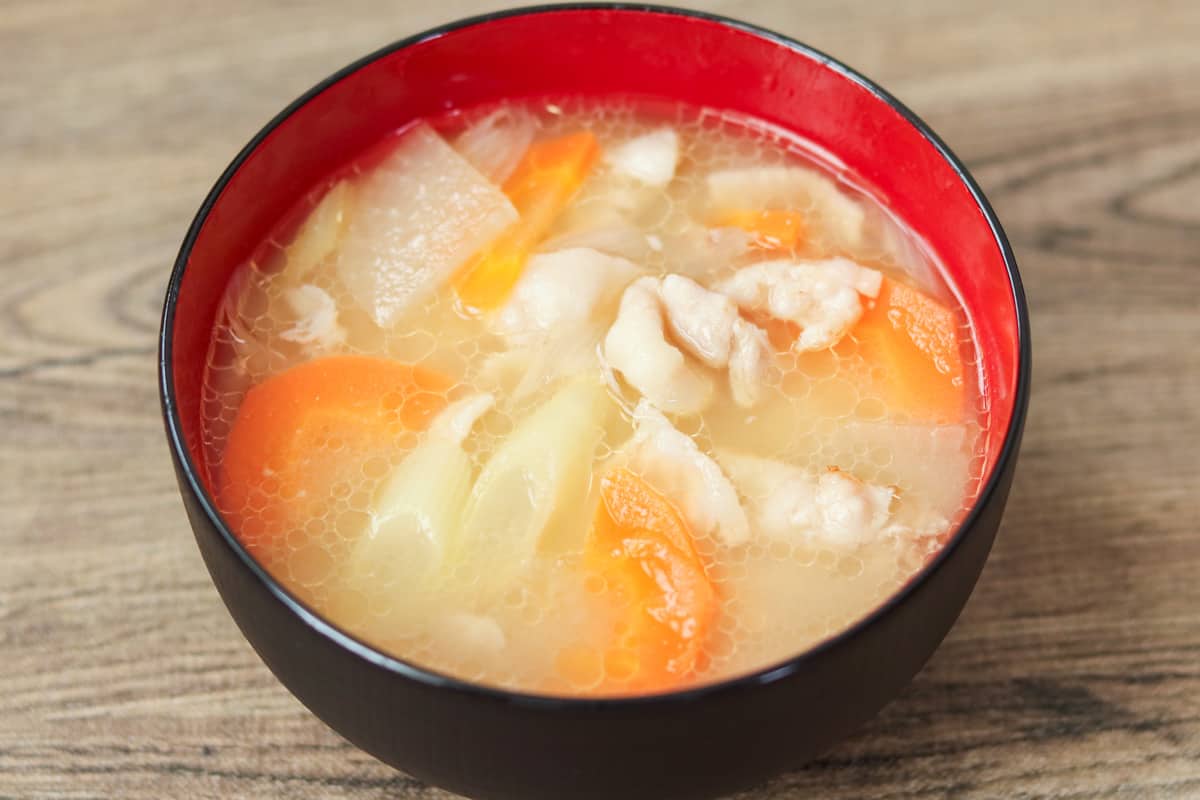
Common ingredients and alternatives
In Japan, when it comes to the ingredients for tonjiru, it is common to use gobo (burdock root), konjac, and Japanese taro root (eddoes).
However, some of these ingredients can be difficult to find outside of Japan and require some preparation. So here, I'm sharing a recipe that doesn't use them to make it easier for more people to enjoy. This is also an authentic tonjiru recipe enjoyed in Japan.
For this recipe, I use naganegi (Japanese leeks; regular leeks can be substituted), carrots, and daikon radish as ingredients that require no preparation other than cutting. You can add or reduce the types of ingredients as you like. Feel free to try using various vegetables available in your local area as well.
Start making traditional miso soup first
Since tonjiru is a variation of miso soup with a twist, I recommend starting with traditional miso soup if you have not tried making it before.
This tonjiru recipe is intended for those already familiar with miso soup and doesn't include instructions for preparing dashi stock. Therefore, If you would like to learn how to make dashi, please refer to steps 3-4 of this source. For more detailed information on making dashi, check out 'How to make Bonito Dashi.'
Tips on how to make
A simple yet important tip for making delicious tonjiru is the same as for miso soup: add miso last and avoid heating it afterward. If the miso is heated after being added, the flavor and beneficial bacteria in the miso may be lost.
Therefore, I recommend consuming this dish immediately after cooking. If reheating is necessary, do so gently, just enough to prevent it from boiling.
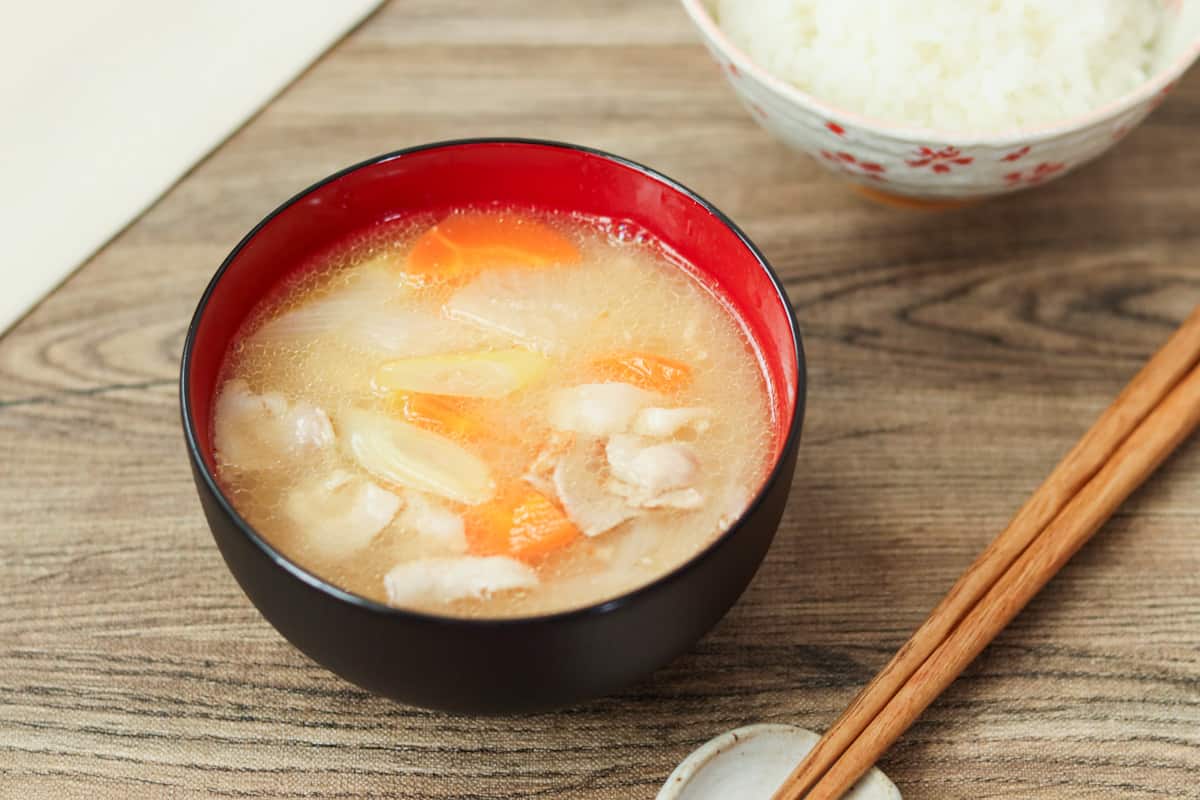
📋Step-by-step recipe
Ingredients
- 2.8 oz thinly sliced pork belly
- 1.4 oz Japanese leek (naganegi) (it can be substituted with regular leek)
- 1.4 oz carrot
- 1.4 oz daikon radish
- 1 ⅔ cups dashi stock (Please refer to the linked page for instructions on how to make it. For plant-based options, see the pages on kombu dashi and shiitake dashi.)
- 2 Tbsp miso
Instructions
🕒 Total: 15 mins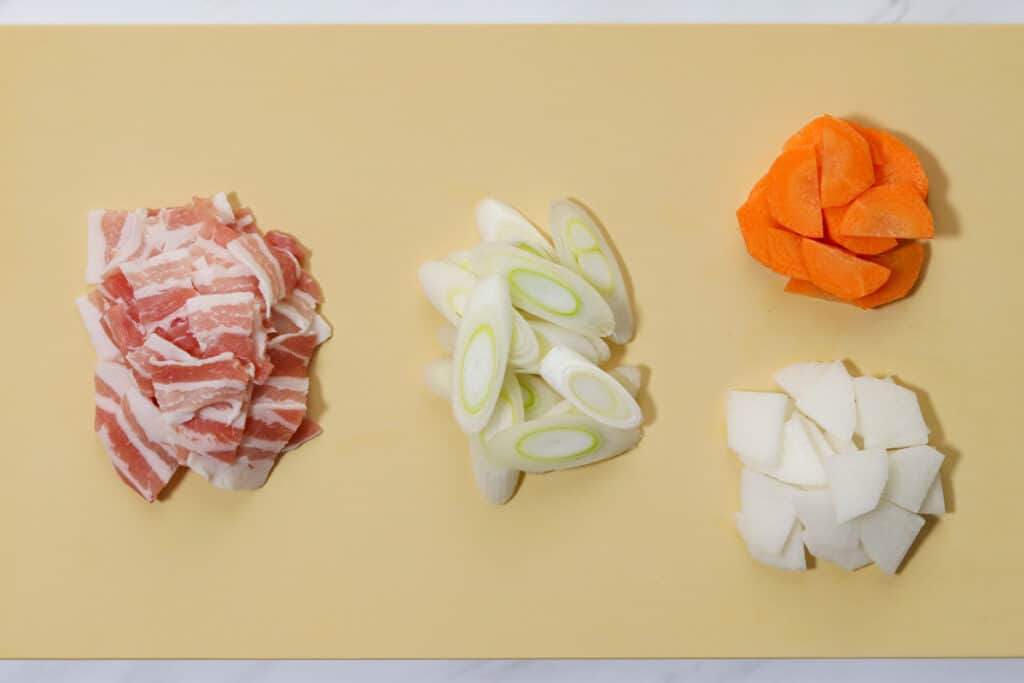
Step 1
Cut pork belly into 1-inch (2.5 cm) wide pieces. Slice Japanese leek diagonally into ⅕-inch (5 mm) wide pieces. Cut carrot and daikon into bite-sized pieces.
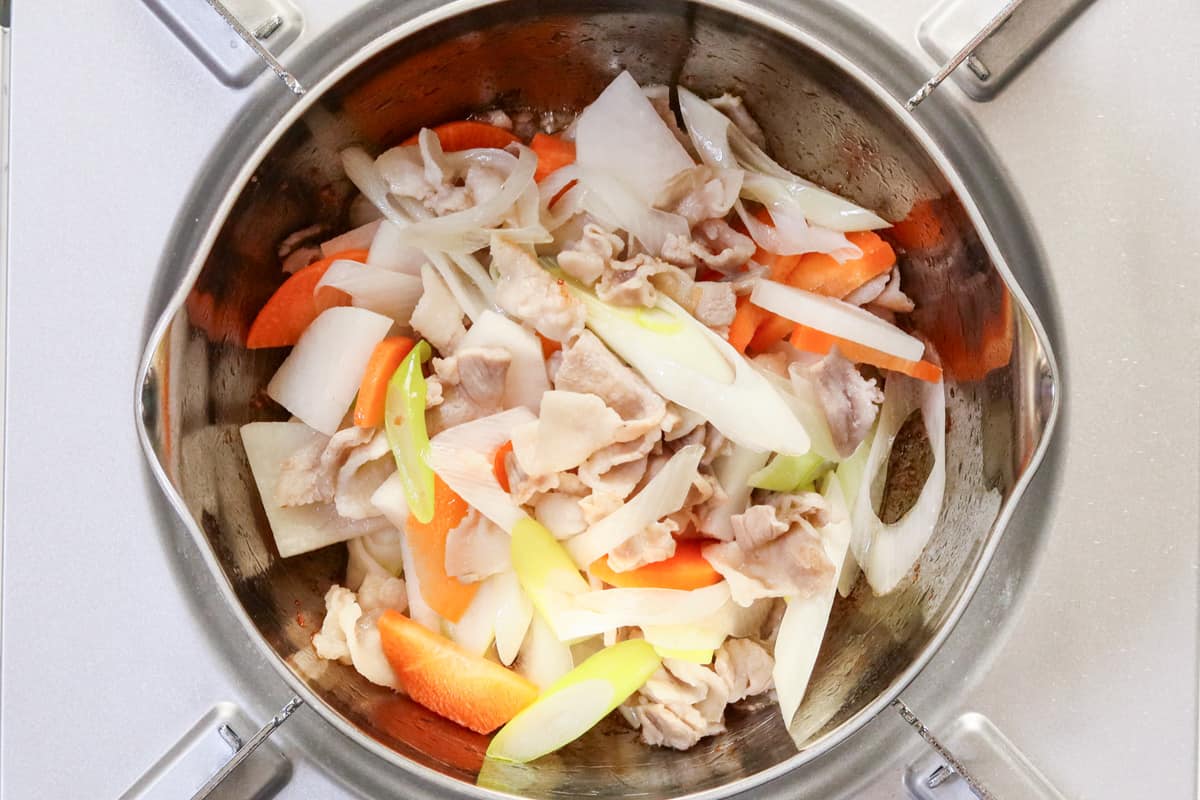
Step 2
Heat oil in a pot and sauté the pork belly over medium heat until it changes color. Then, add the leeks, carrots, and daikon, and continue sautéing until they are cooked through.
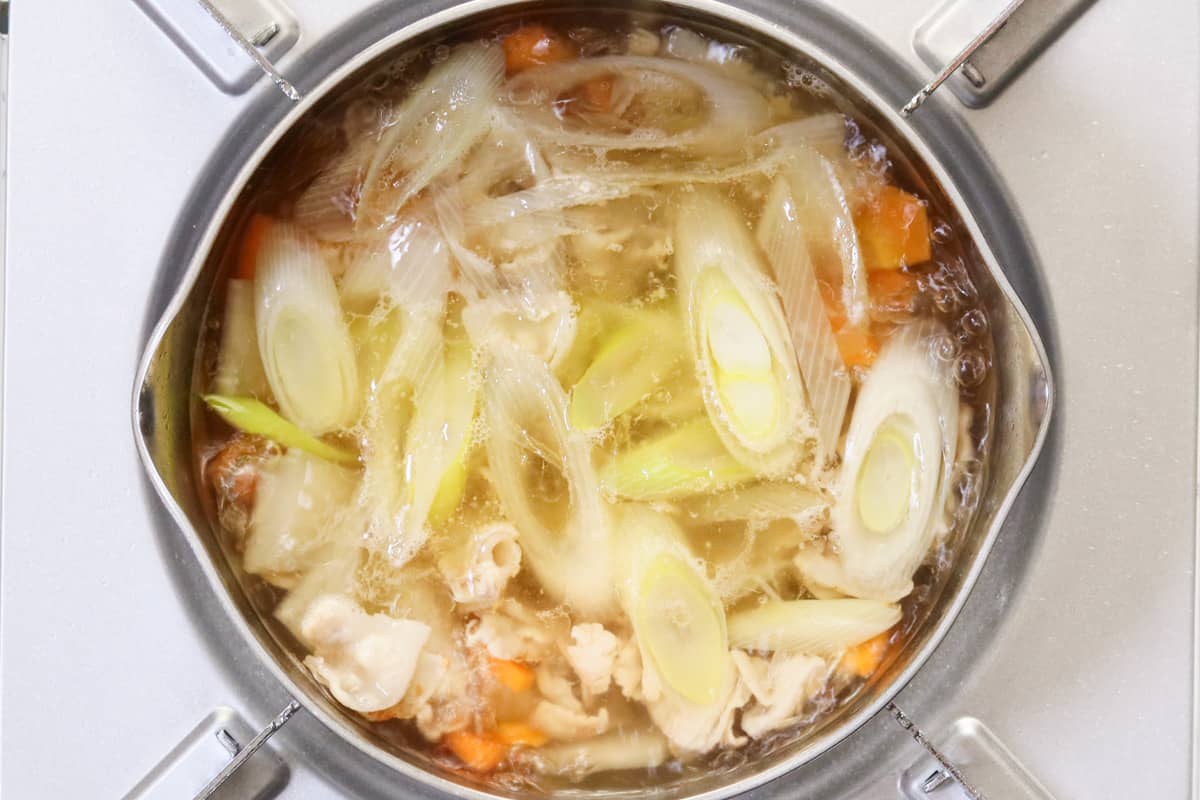
Step 3
Add dashi to the pot and bring it to a boil. Once boiling, reduce the heat to medium and simmer until the vegetables are tender, removing any scum. (Do not remove the yellowish substance on the surface, as it contains the umami component of the pork.)

Step 4
Turn off the heat and dissolve miso in the pot using a ladle and chopsticks.
To store
You can store it in the refrigerator for up to 2 days.
If you try this recipe, I’d love to hear what you think. Please consider leaving a review and star rating in the comments below. If you enjoyed it, I’d really appreciate it if you shared it with your friends.
Recipe card
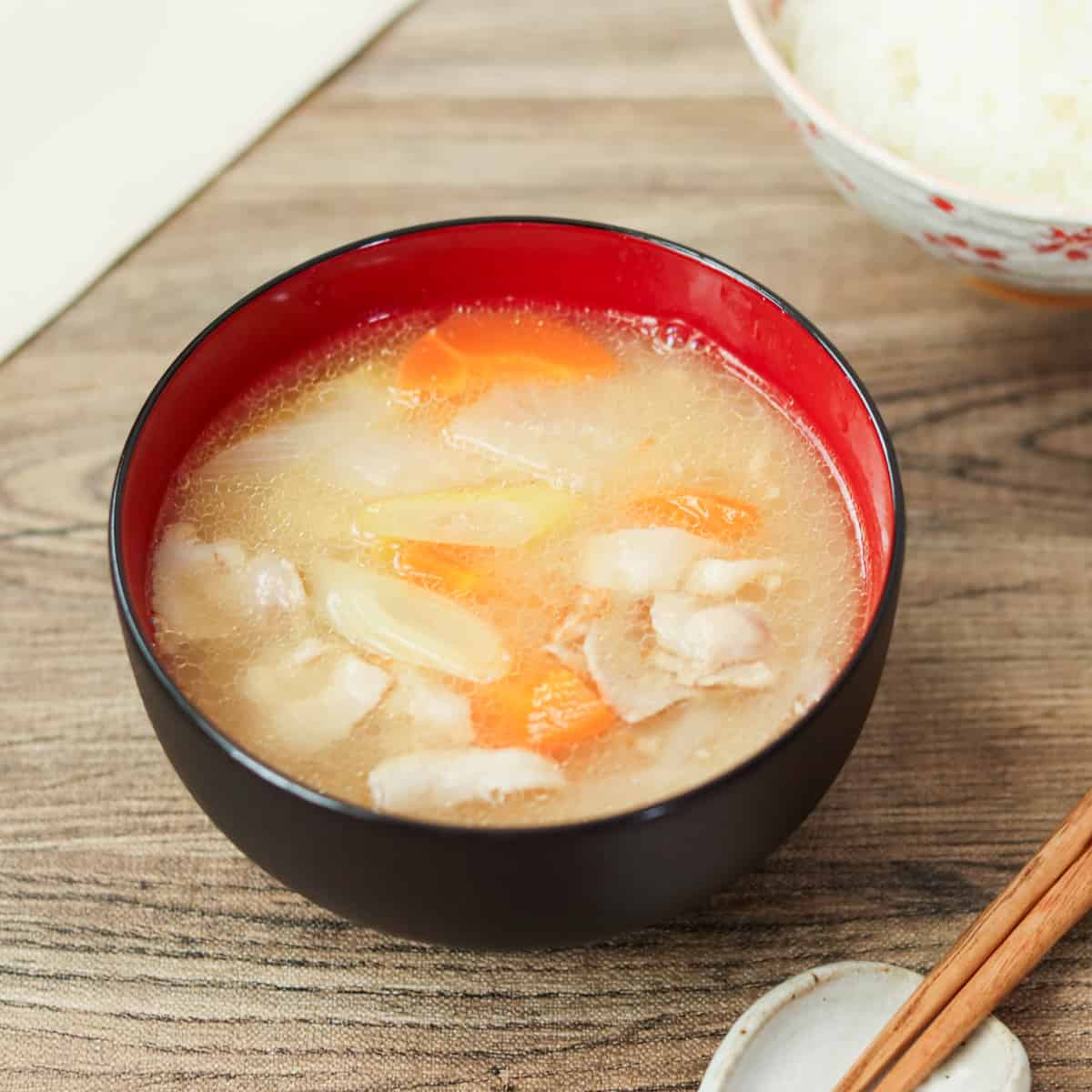
Tonjiru (Flavorful Pork and Vegetable Miso Soup)
Ingredients
- 2.8 oz thinly sliced pork belly
- 1.4 oz Japanese leek (naganegi) (it can be substituted with regular leek)
- 1.4 oz carrot
- 1.4 oz daikon radish
- 1 ⅔ cups dashi stock (Please refer to the linked page for instructions on how to make it. For plant-based options, see the pages on kombu dashi and shiitake dashi.)
- 2 Tbsp miso
Instructions
- Cut pork belly into 1-inch (2.5 cm) wide pieces. Slice Japanese leek diagonally into ⅕-inch (5 mm) wide pieces. Cut carrot and daikon into bite-sized pieces.
- Heat oil in a pot and sauté the pork belly over medium heat until it changes color. Then, add the leeks, carrots, and daikon, and continue sautéing until they are cooked through.
- Add dashi to the pot and bring it to a boil. Once boiling, reduce the heat to medium and simmer until the vegetables are tender, removing any scum. (Do not remove the yellowish substance on the surface, as it contains the umami component of the pork.)
- Turn off the heat and dissolve miso in the pot using a ladle and chopsticks.
Notes
- You can store it in the refrigerator for up to 2 days.

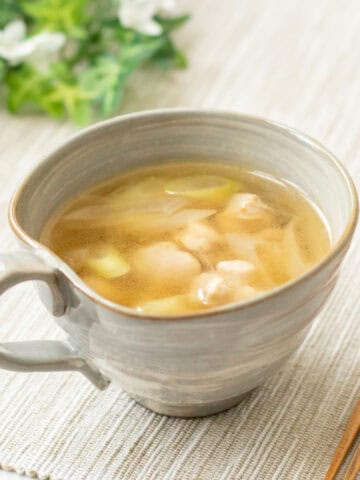

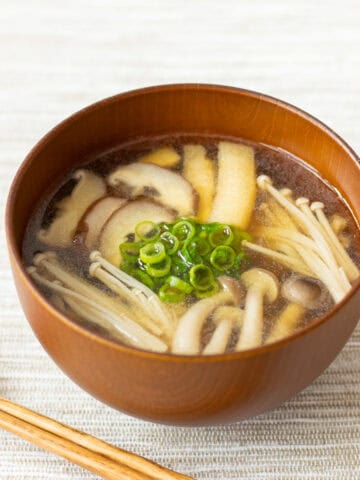
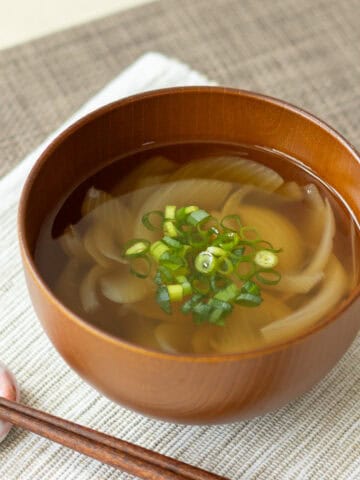
Leave a Rating and a Comment